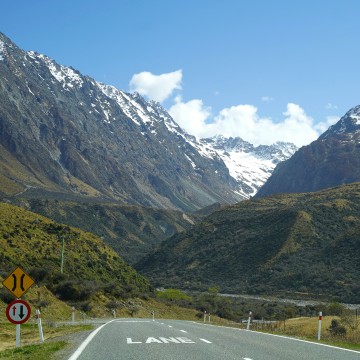Jun 26 2025
Ten tips to help you drive smarter this winter
There’s nothing like teaching a teenage boy to drive (as I’m currently doing) to spark a sudden deep interest in road safety! But, as winter starts to dig its icy claws into our highways and byways (not to mention back roads), it’s a good idea for drivers of all ages and experience levels to spend a few minutes thinking about how to stay safe behind the wheel this season.
We’ve pulled together ten practical tips to get you started.

1. Slow down…no one’s chasing you!
Winter roads can be slippery, thanks to things like black ice, wet leaves, and frost. That means your car needs more time to stop, and it’s more prone to skids. So, take it slow. Pretend you have a passenger with a hot mug of coffee and your job is to keep it from spilling in their lap!
A good rule of thumb? Double your following distance when roads are wet or icy. If you normally follow at two seconds behind the car ahead, make it four. It gives you plenty of breathing room if someone ahead brakes suddenly.
2. Clean windows, clear judgement
Visibility is everything. Foggy or dirty windows can seriously compromise your view, especially when it’s raining sideways or the sun suddenly makes a dramatic entrance through the clouds. Before you head out, give your windows a proper clean (inside and out). Also, a shout-out to the humble windscreen wiper: if it’s streaking more than it’s swiping, it’s time for a replacement.
3. Light it up
Shorter days and unpredictable weather mean you’re often driving in less-than-ideal lighting. Even during the day, it can be gloomy enough to require headlights. Don’t rely on auto lights, they don’t always kick in during fog or heavy cloud cover.
Headlights don’t just help you see, they make you more visible to others. So, switch them on and keep them dipped in foggy or snowy conditions (high beams just bounce light back at you and make things worse).
4. Check the conditions before you go
This might sound obvious, but not everyone remembers to check the weather and road conditions before setting off. Sites like MetService and Waka Kotahi’s Journey Planner are lifesavers when it comes to avoiding unexpected road closures or severe weather events. If the forecast looks dodgy, consider whether you can delay your trip. Sometimes the safest option is simply to hunker down at home.
5. Get to grips with your tyres
Your tyres are the only thing connecting your car to the road, so they deserve some TLC. Make sure they’re properly inflated and check the tread depth. Even though the minimum allowable tread depth is 1.5mm, anything less than 3mm in wet conditions can significantly increase your stopping distance.
And, if you live in or are travelling to snowy areas, carry chains and practice putting them on at home first. Wrestling with chains on a freezing roadside in the dark is not a good time.
6. Respect mother nature
If you’re not driving a 4WD or a vehicle equipped for snow, it’s best to avoid it altogether. But if you do have the right gear and the roads are open, take it slow and steady. Use lower gears, avoid sudden braking or acceleration, and keep your distance. And if you encounter flooded roads, don’t be tempted to drive on through. It’s tricky to judge the depth of water, particularly in poor conditions and if it’s moving swiftly you could quickly find yourself taken for a ride.
7. Don’t be shocked by a flat battery
Cold weather can be tough on car batteries, especially if you don’t drive daily. If your engine sounds like it’s struggling to start, get the battery checked before it leaves you stranded miles from home. It’s also worth keeping jumper cables in your car and knowing how to use them, or at least knowing who to call. Speaking of batteries, a charged phone is also a must.
8. Pack a winter emergency kit
You don’t need to go full survivalist, but you might be grateful for a few handy items stashed in the boot. This might include things like a torch, gloves, poncho, high-vis vest, a reflective triangle, and a basic first aid kit. Warm clothes, snacks and water are also a good idea. Getting stuck without reception and an empty stomach? Nightmare!
9. Beware the bridge
You might not know this, but bridges and overpasses freeze faster than other roads. That’s because they don’t have the ground’s warmth underneath. So, approach them with caution, they can be icy even if the rest of the road isn’t. Shady areas are another trap. If the sun hasn’t hit the road, frost and ice might be waiting to surprise you mid-turn.
10. Be kind
Above all, driving in winter comes down to using good judgement. Give yourself extra time, don’t rush, and be prepared for delays. Expect other drivers to make mistakes (because they will) and give them plenty of space. If getting to your destination safely means arriving a little late, it’s a trade-off worth making.